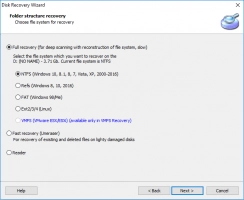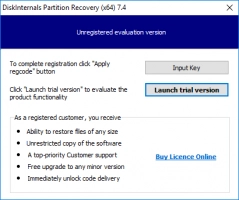Guide on how to check hard drive health
In this article you will find out:
- how to use SMART Status
- how to protect your data
Are you ready? Let's read!

Every hard disk has a shelf life and must eventually be replaced. Your drive will frequently start sending you symptoms when anything is incorrect. These may include clicking or screeching noises, sluggish computer performance, missing or damaged files, download errors, excessively poor data transfer speeds, etc. Naturally, if you've been using your hard disk for a while, this could be standard. A hard disk, after all, has moving components that may degrade over time, as well as magnetic sectors that may malfunction.
SSDs don't have any moving components, but the cells get worse as you perform more write and read operations. This implies that even if the SSD is more durable, they will ultimately fail as well.
So, even if your drive is not subjected to extreme heat or physical harm, it will eventually fail. As a result, you should frequently check the condition of your hard disk so that you can be ready in case it fails.
In other words, you must often examine the hard drive's condition for mistakes and damaged sectors. On the hard disk, there is a tool called SMART for self-monitoring, analysis, and reporting. It keeps an eye on the disk's condition and delivers alerts when something goes wrong.
SMART Status: examine your drive thoroughly
SMART will automatically notify you of data loss; the drive can be replaced as long as it remains functional.
1. A hard drive health check in Windows can be done as follows:
Right-click the Start menu, select Run from the provided list, type "cmd" and press Enter (you can also type "cmd" in the search bar to open the Run window).
Copy and paste:
wmic diskdrive get model, status
After clicking OK, you will get a report showing one of two results:
- “Pred Fail” - this says your disk is damaged
- “OK” - the disk is ok
2. Hard drive diagnostic on macOS:
Open Disk Utility from / Applications / Utilities /, then click the disk and look at "SMART Status" in the lower left-hand corner. You will see one of two options:
- Checked
- Not Working
If you see that your hard drive is on its last breath and SMART technology has confirmed this, it's time to take measures to save your data. Perhaps some of the data is no longer available, but if you hurry, you can recover it! To do this, you need a professional specialized application: DiskInternals Partition Recovery!
How to prevent data deletion?
So, as mentioned above, first of all, you should take care of the contents of the hard disk. DiskInternals Partition Recovery is suitable for this purpose, as it recovers all types of files of any size, and also deeply scans all partitions, even on an inaccessible disk. The application works in all versions of Windows and supports all available file systems, so you will not find a better or more practical option.
The Recovery Wizard allows even beginners to figure it out without any help; this assistant is available not only in a fully functional licensed version but also in a free trial. View the data found during the scan for free in any version of the application; then all actions can be summarized by exporting the recovered data to a hard disk, flash drive, memory card, etc.


Export requires a license and a unique key, which can be purchased on our website for a small fee. In addition, you will have access to technical support and the right to receive highly qualified assistance in complex issues within 12 months from the date of purchase of the license agreement.


